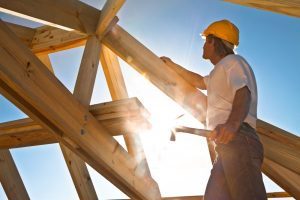 Homeownership rates are improving, but many current apartment renters are still wishing to expand. In response, the single-family built-for-rent (SFBFR) market has expanded to meet demand.
Homeownership rates are improving, but many current apartment renters are still wishing to expand. In response, the single-family built-for-rent (SFBFR) market has expanded to meet demand.
“While the current seasonally adjusted annual rate of homeownership of 64.7% is an improvement over years past, it is below the average rate of 65.6% that had prevailed since 1980,” said Robert Dietz, Ph.D., Chief Economist and SVP for Economics and Housing Policy for National Association of Homebuilders (NAHB). “Combined with ongoing challenges with saving for a down payment, there’s a growing number of households for whom apartment living does not suit their family needs but for whom homeownership remains impractical.”
In a report, Dietz notes that although recent growth for this market has been somewhat subdued, with a market share of just below 5% of all single-family construction starts, the historic market share for SFBFR homes from 1992 to 2012 is 2.7%.
“With such a large inflow into the rental sector, it makes sense that home builders would shift some production to this emerging market,” said Dietz.
“While the current share is small, it is elevated compared with historic norms,” Dietz adds.
Additionally, despite a 2% dip from the final quarter of 2017 through the third quarter of 2018, “the single-family rental market seems set for gains in the years ahead as the demand for single-family structures rises among all tenure types.”
The number of single-family homes built-for-rent posted a year-over-year decline for the fourth quarter of 2019, according to the NAHB. The market has received attention as a means to add single-family inventory amid concerns over housing affordability and down payment requirements in the for-sale market. Single-family built-for-rent (SFBFR) construction does differ in structure characteristics compared other newly-built single-family homes.
The built-for-rent pipeline of single-family homes is considerably smaller than the single-family home portion of the rental housing stock, which is 35% according to the 2017 American Community Survey. Approximately five million single-family homes were added to the rental stock since the Great Recession due to tenure switching. As homes age, they are more likely to be rented and the vast majority of these rental homes are owned by individual households. Thus, the primary source of single-family rental homes is not construction but the existing housing stock. In fact, from 2005 to 2015, 56% of the gains in the rental housing stock were due to increases of for-rent single-family homes.

 theMReport.com Your trusted source for mortgage banking news
theMReport.com Your trusted source for mortgage banking news









